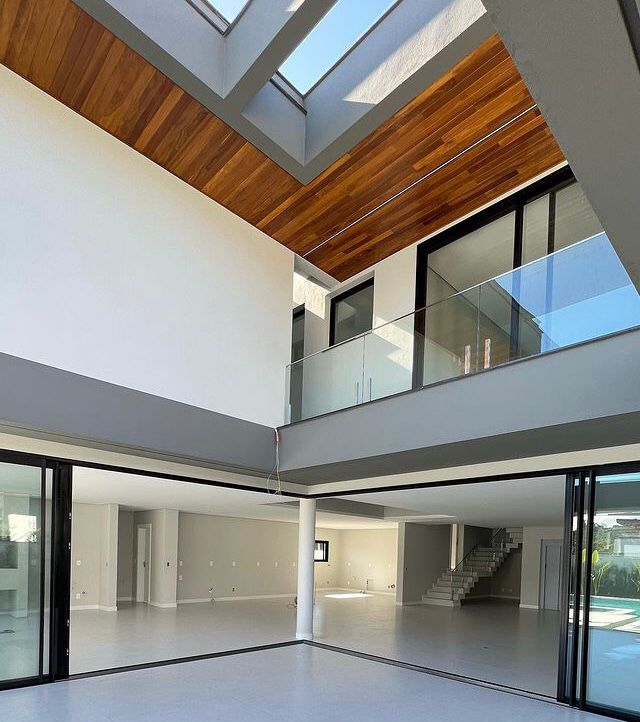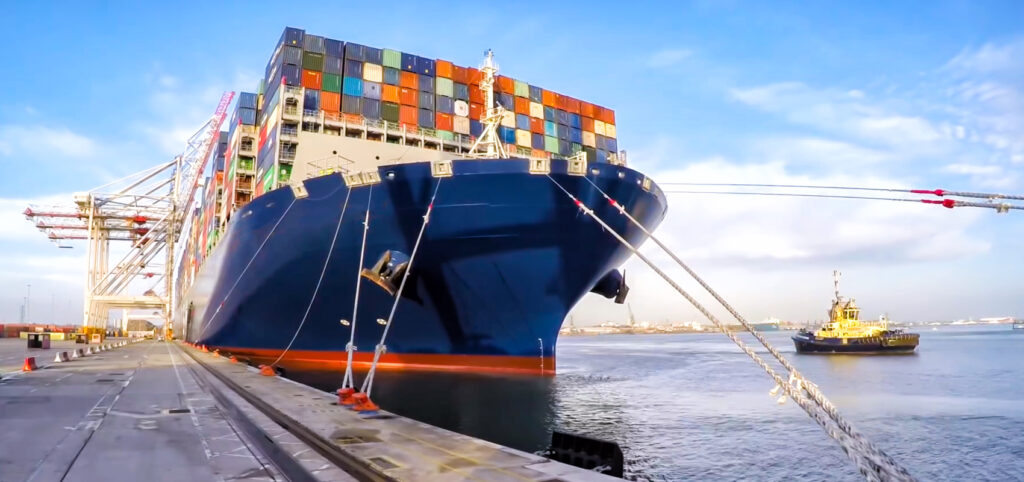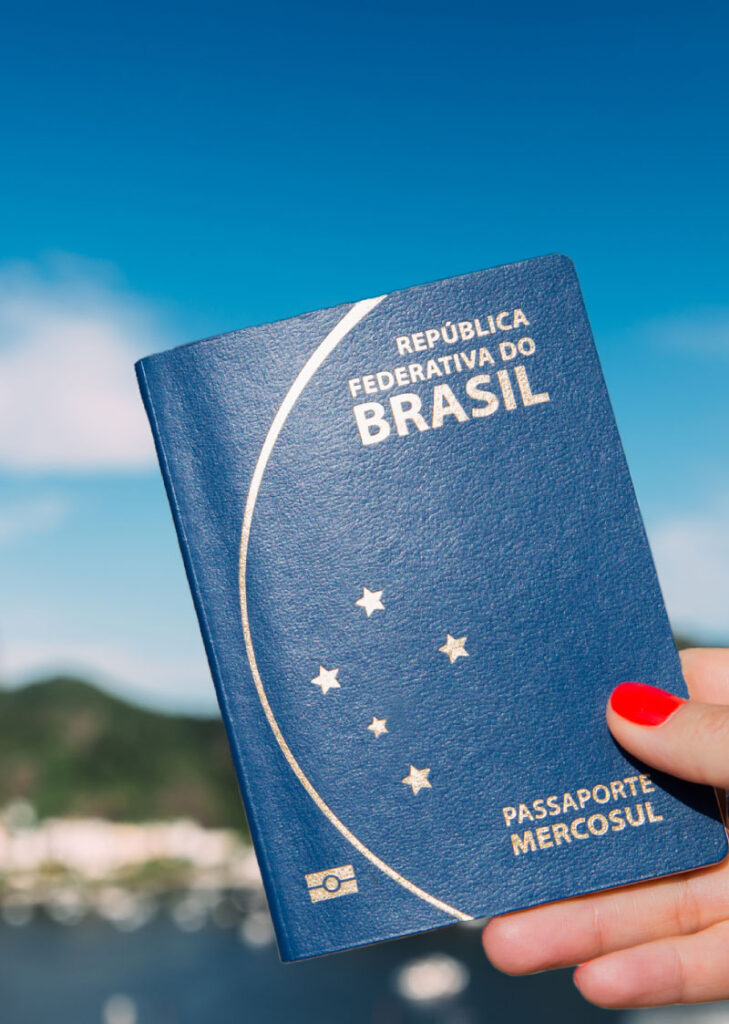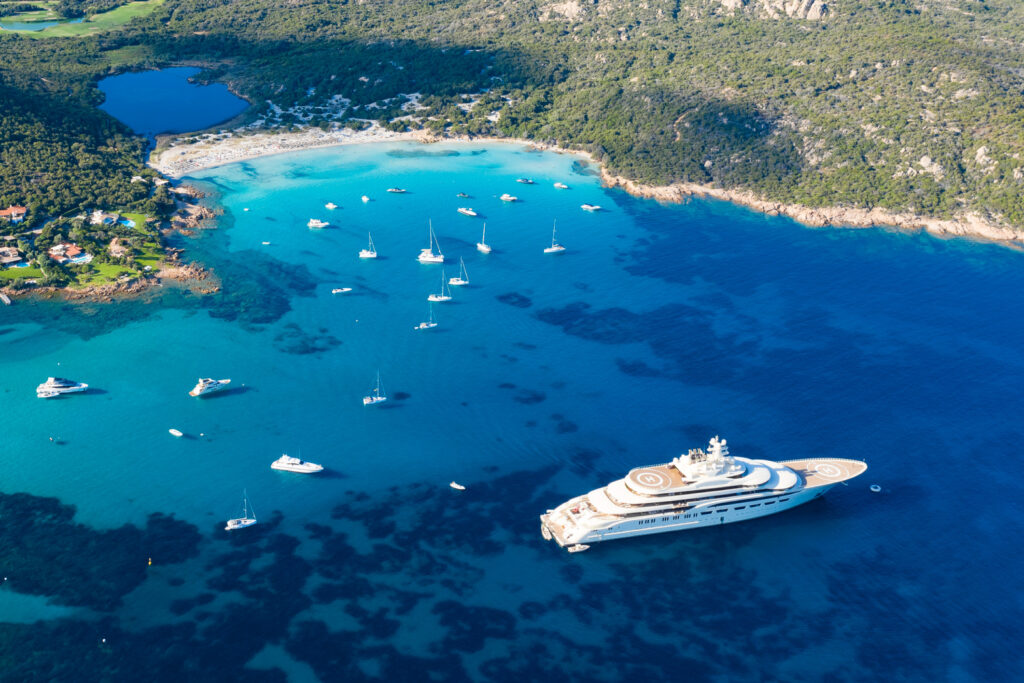Brazil is a vast and diverse country that is home to a variety of cities with unique characteristics and attractions. Here are some of the most important and well-known cities in Brazil:
List of major cities in Brazil
1. Major cities in Brazil
Brasília – the capital of Brazil and the political center of the country
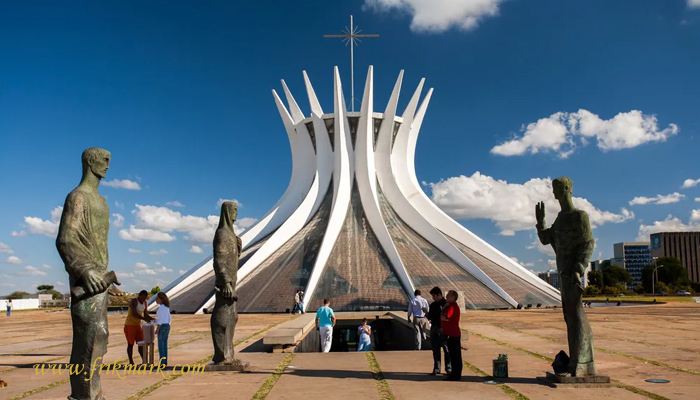
Brasilia has been the official capital of Brazil since 1960. With its unique design and modern architecture, the city is considered one of the most important political and administrative centers of the country. Before the founding of Brasilia, the city of Rio de Janeiro was the capital of Brazil. However, the government decided to move the capital to a more central area to strengthen economic development and national integration. The city was built in 1956 by order of President Juscelino Kubitschek and was officially inaugurated in 1960.
Brasília is known for its futuristic urban design. Brazilian architect Oscar Niemeyer and urban planner Lúcio Costa designed the city based on the shape of an airplane. Important government buildings such as the National Congress, the Palácio do Planalto, and the Supreme Court are prominent examples of modern architecture in Brasília.
Brasília is the main center of the Brazilian government, home to all ministries, embassies, and government offices. The city’s economy is based on government, services, technology, and tourism, and it is one of the cities with the highest per capita income in Brazil.
The attractions of Brasilia include:
- Brasilia Cathedral – a masterpiece of modern architecture with a unique glass roof
- Joscelino Kubitschek Bridge – a beautiful bridge that is considered one of the symbols of the city
- Brasilia National Park – a natural area for recreation and relaxation
- Three Powers Square (Praça dos Três Poderes) – home to the main government buildings
São Paulo – Brazil’s largest city and economic and commercial center
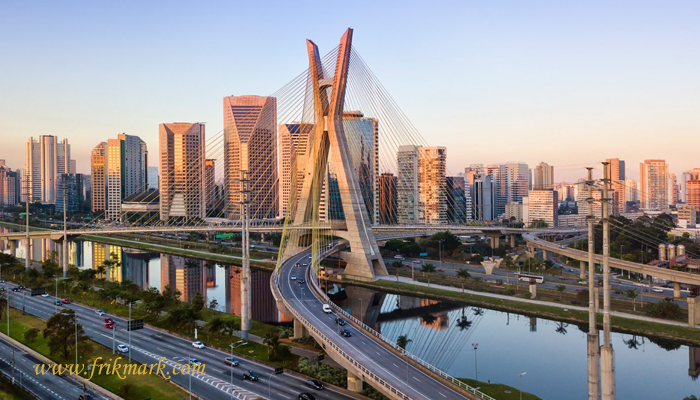
São Paulo is the largest and most populous city in Brazil and one of the most important economic and commercial centers in Latin America. With a population of over 12 million, the city is known as the financial and industrial hub of the country, and is home to major international companies, banks, and the Brazilian Stock Exchange. São Paulo is also considered a multinational city due to its wide cultural diversity, hosting large communities of Italians, Japanese, Arabs, and Portuguese.
Also read: How to open a bank account in Brazil ?
In addition to its strong economy, the city is also an important center for Brazilian culture and art . São Paulo is home to renowned museums such as the São Paulo Museum of Art (MASP), the Municipal Theater, and dozens of modern art galleries. The city also hosts international music, film, and cultural festivals such as São Paulo Fashion Week, making it one of the fashion capitals of the world.
In terms of Brazilian lifestyle , São Paulo is the city that never sleeps. The nightlife is vibrant and lively in neighborhoods like Vila Madalena and Itaim Bibi. The city is also known as the capital of international cuisine in Brazil, with thousands of restaurants and cafes. From local dishes like Feijoada to the excellent sushi in the Japanese neighborhood, São Paulo is a great destination for food lovers.
However, São Paulo also faces challenges. Heavy traffic, air pollution, and social inequality are among the city’s main problems. Nevertheless, the metropolis remains the engine of Brazil’s economy and, with countless job opportunities, prestigious universities, and state-of-the-art facilities, it is an attractive destination for investors, students, and immigrants from all over the world.
Rio de Janeiro – famous for its beautiful beaches and the statue of Christ the Redeemer
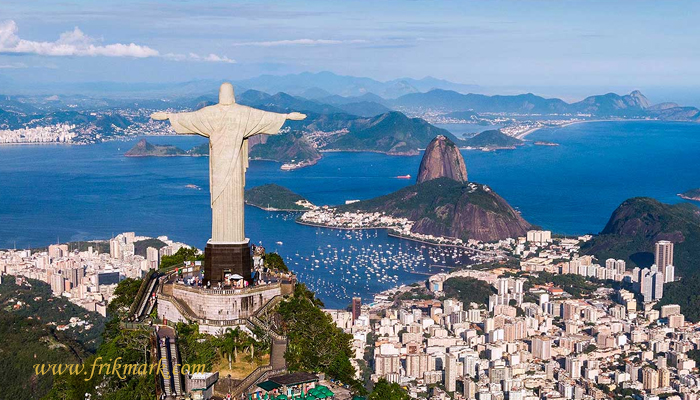
Rio de Janeiro is one of the most beautiful and famous cities in the world, known for its stunning beaches, rich culture and vibrant celebrations. The capital of Brazil until 1960, the city remains one of the most important tourist, cultural and economic centers of the country. Famous beaches such as Copacabana and Ipanema are symbols of Rio and attract millions of tourists every year.
One of Rio’s most prominent attractions is the statue of Christ the Redeemer, located on Corcovado Mountain and recognized as one of the New Seven Wonders of the World. Sugarloaf Mountain is also another symbol of the city, from the top of which you can see a fantastic view of the city and its beaches. In addition to the stunning nature and architecture, the Rio Carnival is one of the largest and most colorful celebrations in the world, attended by millions of people every year.
Rio is not only a city for entertainment, but also the cultural and sporting center of Brazil. The city has hosted major international events such as the 2014 World Cup and the 2016 Olympics, and the famous Maracanã stadium is one of the most important football symbols in the world. Rio is also the heart of samba and bossa nova music, which can be heard in the streets, cafes and nightclubs.
Despite all its beauty, Rio de Janeiro also faces challenges such as social inequality and security problems. Wealthy areas such as Leblon and Barra da Tijuca contrast with favelas, or slums. However, the city remains one of the most vibrant and loveable destinations in the world, combining nature, culture, music and a zest for life.
Also read: Getting a Brazil Visa
Salvador – a historic city with a rich Afro-Brazilian culture
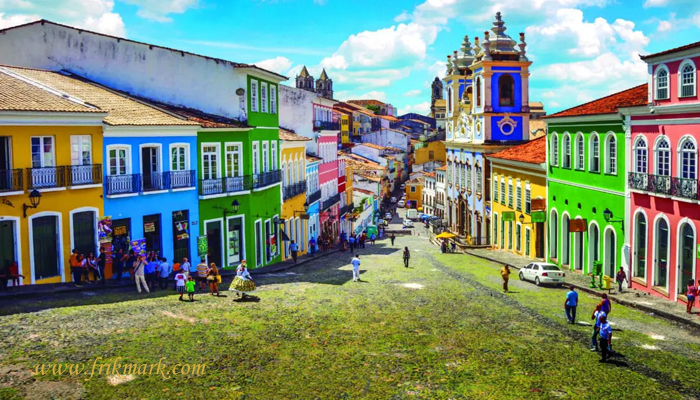
Salvador, the capital of the state of Bahia, is one of Brazil’s most historic and cultural cities. Founded by the Portuguese in 1549, it was the first capital of Brazil and is today considered the country’s cultural and spiritual capital. The cobblestone streets and colorful buildings of the historic Pelourinho district, a UNESCO World Heritage Site, reflect the city’s rich history and colonial architecture.
Salvador is known as the center of Afro-Brazilian culture in Brazil. Here, strong African influences are evident in the music, dance, religion, and local cuisine. Capoeira, a martial art that combines music and dance, was born in this city. Also, traditional dishes such as Moqueca and Acarajé, inspired by African culinary influences, are among the unique delights of Salvador.
One of the biggest attractions in Salvador is the Salvador Carnival, which is considered the largest street party in the world. Unlike Rio Carnival, which is mostly about samba, Salvador Carnival focuses on the Axé music style, filling the city’s streets with endless energy, dance, and music. The festival attracts millions of domestic and international tourists.
Along with its rich culture, Salvador has wonderful beaches like Farol da Barra and Itapuã, with their warm waters and golden sands, making it a great place to relax and unwind. With its vibrant spirit, rich history, delicious cuisine, and beautiful nature, this city is one of Brazil’s most unique and attractive destinations, offering an unforgettable experience for every visitor.
2. Tourist and coastal cities
Florianópolis – a coastal paradise with stunning beaches
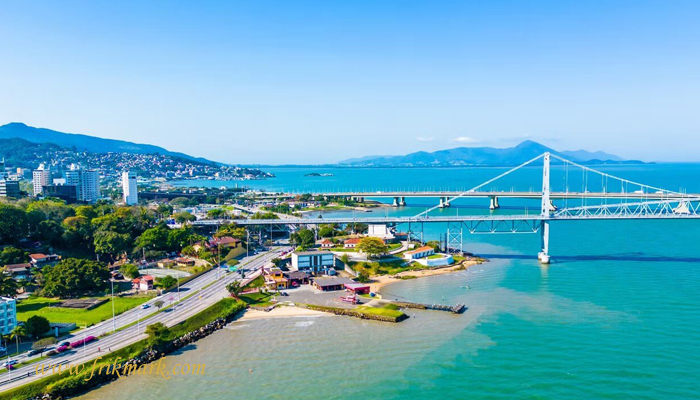
Florianópolis, the capital of the state of Santa Catarina, is one of the most beautiful and peaceful cities in Brazil, known as the Magic Island (Ilha da Magia) for its amazing beaches and pristine nature. The city is a combination of modernity and nature; on the one hand, it has a modern urban infrastructure, and on the other, with 42 unique beaches, lush hills and beautiful lakes, it is a paradise for nature and adventure lovers.
Florianópolis is one of the best surfing destinations in Brazil, with famous beaches like Praia do Rosa, Joaquina, and Mole being popular spots for both professional and novice surfers. The island also has nature trails, pristine waterfalls, and scenic lagoons like Lagoa da Conceição, which attract many tourists for their unique beauty.
In addition to its natural attractions, the city has a high standard of living and is considered one of the safest and most developed regions in Brazil. Luxury restaurants, cozy cafes and local markets give Florianópolis a special charm. The influence of Portuguese culture is also evident in the architecture, music and traditional cuisine of the region, and fresh seafood, especially Sequência de Camarão, a delicious combination of shrimp, is very popular in the city.
Florianópolis is also one of the most popular destinations for living and moving in Brazil. Many Brazilians and foreigners choose it as their permanent residence due to its high quality of life, pleasant climate and peaceful island environment. With a unique combination of nature, sports, culture and modern life, the city is considered one of the most special tourist and residential destinations in Brazil.
Recife – the Venice of Brazil with beautiful water canals
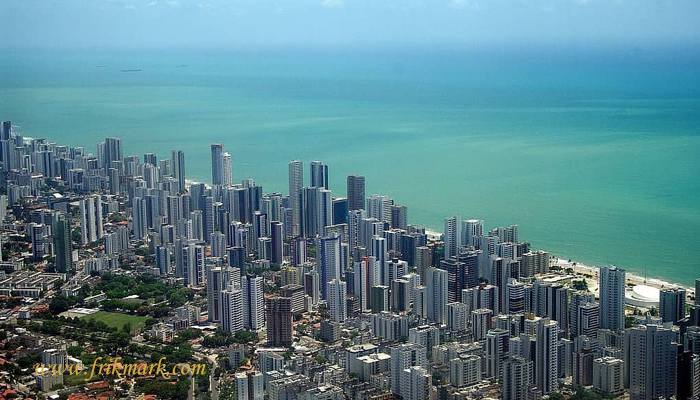
Recife, also known as the “Venice of Brazil”, is a major coastal city in northeastern Brazil and the economic, cultural, and educational center of the state of Parnabá. Located on the Capibaribe River, the city has an extensive network of canals, bridges, and beautiful beaches. Its colonial architecture, a blend of Portuguese and Dutch traditions, gives it a special charm.
Recife is a popular tourist destination in Brazil due to its beautiful beaches. The beaches of Ponta das Duques and Boa Vista are popular with tourists and locals alike, with their crystal-clear blue waters. The city is also a great destination for nature lovers, thanks to its islands and natural parks, such as the Marajo National Park and Itamaracá Island.
Another important cultural feature of Recife is its traditional music and dance. Recife is home to Frevo and Maracatu music, which are featured in local festivals and carnivals in the city. In addition, Recife is also known in the art world for its numerous museums and art galleries. The Recife Fine Arts Museum and the Museu do Frio are examples of places that showcase Brazilian culture and art.
Recife is also one of the important economic centers in the northeast of Brazil due to its rapid economic growth and innovative industries. The city is known as one of the emerging economic hubs in the region due to its advanced infrastructure and commercial and investment activities. In addition, Recife has attracted the attention of many foreign investors and tourists as a venue for international conferences and festivals.
Ultimately, Recife, with its unique combination of beautiful beaches, rich history, vibrant culture, and cutting-edge industry, is one of Brazil’s most attractive and diverse cities, offering a unique experience for every type of interest.
Natal – the city of golden sands and famous sand dunes
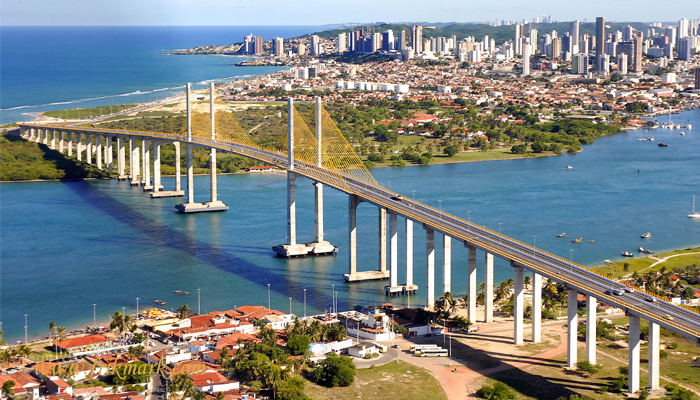
Natal, the capital of the state of Rio Grande do Norte in northeastern Brazil, is known as the “City of the Sun” for its beautiful beaches and warm, sunny climate. With over 300 days of sunshine a year, the city is a great destination for beach and water lovers. Natal’s famous beaches, such as Ponta Negra and Genipabu, offer white sand and clear waters, making them ideal for sunbathing, swimming, and water sports.
One of Natal’s unique features is its sand dunes, which invite tourists to experience sand safaris and driving special vehicles over the high dunes. These dunes are especially famous in General Moreno, where you can enjoy spectacular natural landscapes and exciting experiences. Also, the Forte dos Reis Magos, built in the 16th century, is one of the most important historical attractions in Natal, reflecting the colonial and maritime history of the region.
In addition to its natural beauty, Natal also has a rich culture. Local festivals, traditional music, and Brazilian dances such as Forró showcase the culture of the Natal people. The city is also home to local crafts and markets where tourists can buy souvenirs of indigenous arts and crafts.
Combining beautiful beaches, a rich history, and a vibrant local culture, Natal is a place that appeals to both nature lovers and those looking to discover Brazil’s history and culture. Natal is an ideal tourist destination for those seeking seaside relaxation and unique experiences.
Fortaleza – one of the most beautiful coastal tourist destinations
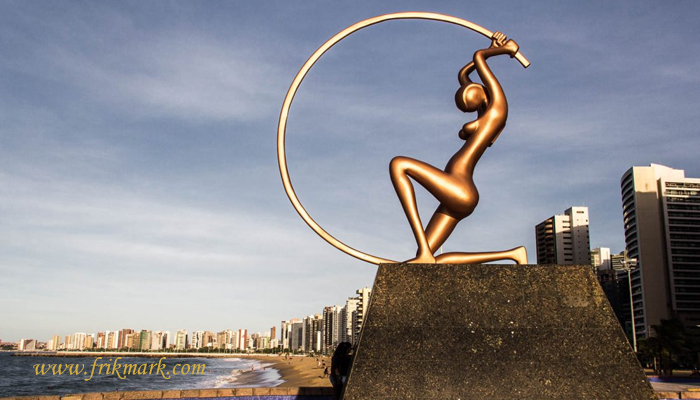
Fortaleza, the capital of the state of Ceará in northeastern Brazil, is one of the most popular tourist destinations in the region. The city is known for its beautiful beaches, cultural attractions, and vibrant nightlife. Famous beaches such as Praia do Futuro and Praia de Lagamar, with their white sand and clear blue waters, are great for swimming, sunbathing, and water sports. Fortaleza is also a popular destination for tourists due to its hot, dry climate and more than 300 days of sunshine per year.
Fortaleza is also known as the birthplace of traditional Brazilian music and dance. The city is the birthplace and spread of musical styles such as Forró, which is performed at local festivals and events. One of the biggest celebrations in Fortaleza is the Fortaleza Carnival, where thousands of locals and tourists take to the streets to celebrate with music and dance. In addition to the music, there are also local markets and craft shops where tourists can buy unique souvenirs.
Other attractions in Fortaleza include the Fortaleza de São José de Macapá Fortress and the Fortaleza Museum of Fine Arts, which showcase the city’s history and culture. Also, the Jericoacoara National Park (Parque Nacional de Jericoacoara), located near Fortaleza, is a popular place for nature and water sports.
Combining beautiful beaches, traditional festivals and music, vibrant nightlife and historical attractions, Fortaleza is an ideal destination for both history and culture enthusiasts and those looking for relaxation and fun by the sea. The vibrant heart of northeastern Brazil, Fortaleza offers a unique experience for visitors.
3. Historical and cultural cities
Ouro Preto – a colonial city with beautiful baroque architecture
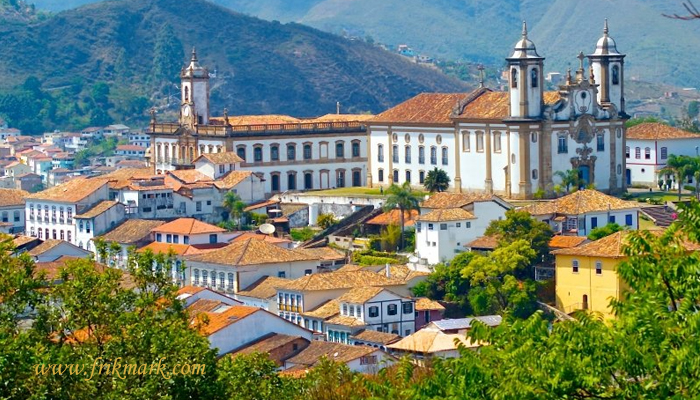
Ouro Preto, which means “black gold,” is one of Brazil’s most beautiful and historic cities, located in the state of Minas Gerais. The city, which became famous in the 18th century for the discovery of abundant gold reserves, became one of the most important gold mining centers during the Portuguese colonial era. Today, Ouro Preto is recognized as one of Brazil’s leading tourist destinations for its unique Baroque architecture and rich history, and is a UNESCO World Heritage Site.
One of the special features of Ouro Preto is its stone streets and buildings, which are beautiful remnants of the Portuguese colonial era. The narrow streets, colorful houses and old churches, such as the Church of São Francisco (Igreja de São Francisco de Assis) and the Mother Church (Igreja Matriz de Nossa Senhora do Pilar), are outstanding examples of Baroque architecture. Ouro Preto is also full of museums and art galleries that showcase the history of gold mining, industry and life during the colonial era.
The city is also known as a cultural and artistic center. The National Museum of Ouro Preto and the Historical Museum of Ouro Preto are among the places of interest that can provide visitors with a wealth of information about the city’s history, baroque arts, and local culture. Ouro Preto also has a vibrant academic and academic atmosphere due to the presence of the Federal University of Ouro Preto (UFOP), one of the most prestigious universities in Brazil.
Although Oro Parto is known for its rich history, its natural beauty is also remarkable. The city is located in the heart of the Zibal and Aracha mountains, and has stunning natural landscapes of mountains, valleys and forests, making the area an attractive destination for nature lovers and photographers.
Ouro Preto, with its combination of historical, cultural and natural beauty, is a city that every lover of Brazilian history and culture should visit. This magical city with a peaceful atmosphere and full of history, in the heart of the mountains of Minas Gerais, provides an unforgettable experience for every tourist.
Paraty – small historic town with cobblestone streets
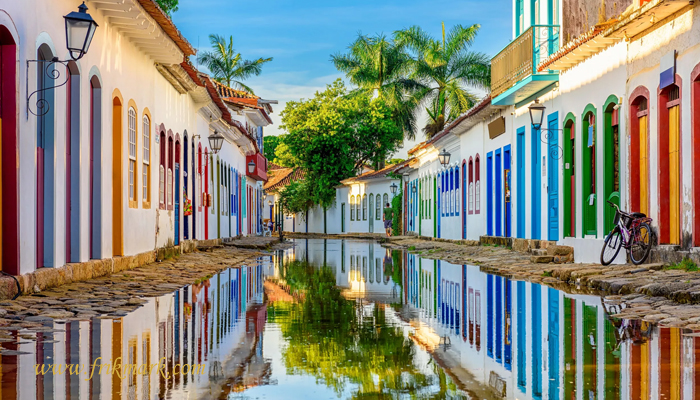
Paraty is one of the most attractive tourist destinations in the state of Rio de Janeiro, known for its rich history, colonial architecture and pristine beaches. Founded in the 17th century, the city was known as one of the most important trading ports during the Portuguese colonial era. Today, Paraty is one of the most attractive cities for those interested in Brazilian history and culture, thanks to its beautiful scenery, cobblestone streets and historic buildings dating back to the colonial era.
One of Paraty’s unique features is its historic center, which is well-preserved with Portuguese colonial architectural influences. Narrow, cobblestone streets, whitewashed houses with colorful doors and windows, and old churches provide a beautiful and peaceful environment for tourists. The Church of São Gonçalo (Igreja de São Gonçalo) and the Church of Nossa Senhora do Rosário are important religious attractions in the city.
In addition to its historical beauty, Paraty is also known for its pristine beaches and beautiful islands. With their clear waters and untouched nature, the Paraty Islands are great places for swimming, diving and boat trips. Also, the Paraty National Park, with its tropical forests and hiking trails, is an ideal destination for nature lovers and ecotourism.
Besides history and nature, Paraty is a lively and vibrant city due to its cultural festivals, especially the Paraty Carnival and the Paraty Music Festival. These celebrations bring people to the streets, creating a happy and cultural atmosphere, with the presence of local and international artists.
Combining a rich history, colonial architecture, beautiful beaches, and a vibrant cultural atmosphere, Paraty is an attractive and unforgettable destination for tourists seeking a relaxing experience filled with natural and cultural beauty.
Maranhão (São Luís) – cultural center with Portuguese colonial architecture
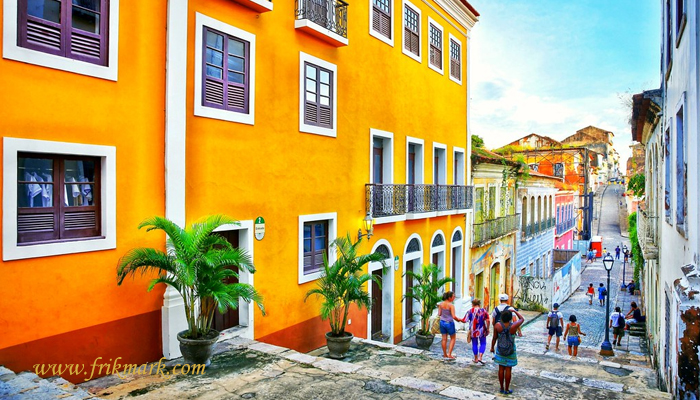
Maranhão (São Luís), the capital of the state of Maranhão in northeastern Brazil, is known as a city with a rich history, vibrant culture, and colonial architecture. Also known as the “Island of Music,” the city is one of Brazil’s most unique cultural destinations due to its African and European influences in art and music. The historic center of Maranhão, adorned with Portuguese colonial architecture, features colorful buildings and narrow streets with handmade bricks, and is well-preserved and a UNESCO World Heritage Site.
Music plays a special role in Maranao, especially Boi Bumba, which is one of the most important music and dance styles in the region. This style of music, performed during traditional local celebrations such as the Boi Bumba Festival, is considered a symbol of the cultural identity of the Maranao people, using traditional musical instruments and joyful dances. These festivals and performances are among the city’s greatest cultural attractions, attracting tourists from all over the world.
Another highlight of Maranhão is its beaches and pristine nature. Nearby, you can visit pristine beaches and natural areas such as Lençóis Maranhenses National Park. Known for its white, powdery sand and natural lakes, this park is considered one of Brazil’s natural wonders and a great destination for nature lovers and photographers.
In addition to its history, culture, and nature, Maranhão is also known for its local markets, restaurants, and traditional cuisine. Dishes such as Acarajé and Moqueca, which are inspired by African and indigenous culinary influences, are among the city’s culinary delights. This combination of culture, history, music, and food has made Maranhão an attractive destination for tourists.
With a rich history, vibrant music, and stunning nature, Maranhão is one of the best destinations for those looking to experience indigenous culture, deep history, and beautiful beaches in northeastern Brazil.
4. Economic and industrial cities
Curitiba – a modern city with advanced infrastructure

Curitiba, the capital of the state of Paraná in southern Brazil, is considered one of the most advanced and greenest cities in Brazil. The city is known for its innovative public transportation, environmental and quality of life initiatives. Curitiba is considered a model for sustainable and smart cities in the world, with successful programs in recycling, green spaces and efficient public transportation. One of its most interesting aspects is its rapid and segregated bus system, which is considered a model for urban transportation in many parts of the world.
One of the most striking features of Curitiba is its vast parks and green spaces, scattered throughout the city. Parks such as Parque Barreiras and Parque Tierra da Soy, filled with lush trees and walking paths, provide a peaceful and pleasant environment for residents and visitors. Thanks to these green spaces, Curitiba is also known as the city of parks, a feature that has attracted many nature lovers.
Curitiba is also a vibrant city due to its cultural and historical diversity. Once a point of European immigration to Brazil, the city is home to a variety of cultures. Art museums such as the Curitiba Art Museum and the Handicrafts Museum, as well as water features and historic buildings such as the Santa Teresa Church, showcase the city’s rich history.
Along with its urban and cultural developments, Curitiba is a city for culinary enthusiasts, with a diverse range of restaurants and cuisines that draw on influences from different cultures. Local dishes such as barbacoa and piorca (meat dishes) are among the culinary attractions of the city.
Combining modern technologies, a commitment to the environment, a rich culture, and extensive green spaces, Curitiba is a city that is a highly attractive and advanced destination not only for living but also for tourism.
Campinas – Center for Technology and Innovation
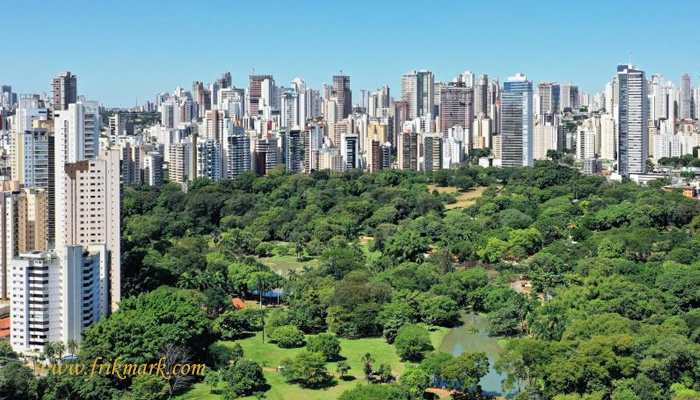
Campinas is one of the largest and most important cities in the state of São Paulo, Brazil. Located a short distance from the state capital, São Paulo, the city is considered one of the main industrial and economic centers of Brazil. Campinas is known for its rapid economic development, international companies, and advanced technologies, and has become a major hub for the electronics, automotive, and biotechnology industries.
Campinas is not only economically important, but also known for its cultural and educational centers. The city is home to the State University of Campinas (UNICAMP), one of the most prestigious universities in Brazil and one of the leading scientific and research centers in Latin America. The city’s universities and educational institutions are world-renowned, especially in the fields of engineering, natural sciences, and medicine.
In addition to its economic and scientific aspects, Campinas is an ideal place for those looking for relaxation and recreation in the heart of nature, thanks to its numerous parks and green spaces. Parque Taquaral and Parque Ipiranga are among the places that provide a peaceful and pleasant atmosphere for tourists. The city also has museums, art galleries and theaters that focus on Brazilian and international culture and art.
As a major industrial and economic city, Campinas has its own food culture, along with a diverse cuisine and outstanding restaurants. Traditional Brazilian dishes , along with international dishes, are offered in the city’s restaurants. In addition, Campinas is also known as a commercial and shopping center, and large shopping malls and local markets have created a suitable atmosphere for shopping and entertainment.
Combining industrial, scientific, cultural and recreational characteristics, Campinas is a city that is a great destination for those seeking to experience a dynamic urban life combined with green spaces and scientific opportunities.
Belo Horizonte – economic hub in the southeast region
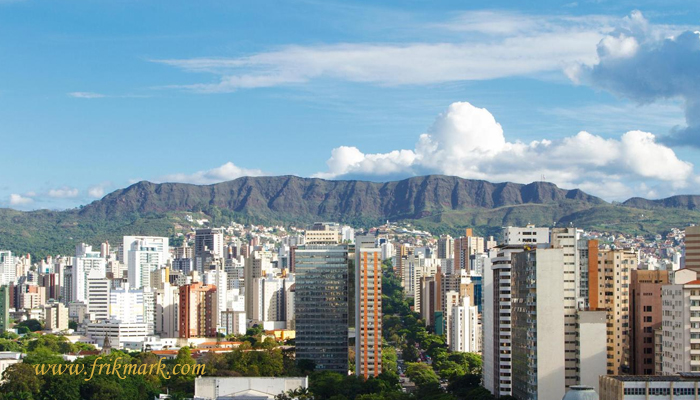
Belo Horizonte, the capital of the state of Minas Gerais in Brazil, is one of the country’s most prominent and important cities, known for its modern architecture, rich culture, and delicious cuisine. The city, which means “beautiful horizon,” is located at the foot of the Cerro do São Francisco mountains and attracts many tourists due to its natural landscapes and peaceful atmosphere in the heart of a large city. As an economic, industrial, and cultural center, Belo Horizonte is one of the most important destinations in southeastern Brazil.
One of the outstanding features of Belo Horizonte is its vast green spaces and parks, which offer residents and tourists the opportunity to relax and enjoy nature. Famous parks such as Parque das Águas Formosas and Parque Municipal da Pampulha are ideal places for walking, cycling and picnicking. These features make Belo Horizonte known as a city with a perfect balance between urban life and natural tranquility.
Belo Horizonte is also known as one of the leading food and culinary destinations in Brazil. The city is home to traditional Minas Gerais dishes, the most famous of which are “Pie Jandoia” and “Feijuada”. Belo Horizonte’s restaurants offer a variety of local and international cuisine, providing visitors with a unique experience of different flavors.
In addition to its food and nature, Belo Horizonte is known for its cultural and artistic activities. The Belo Horizonte Contemporary Art Museum and the Pambuca Art Galleries are among the places that showcase local culture and art. Various festivals and cultural events are also held in the city throughout the year, which helps to increase its cultural appeal.
Combining pristine nature, rich culture, and modern city life, Belo Horizonte is a city that is a great destination for those seeking a peaceful and cultural experience combined with advanced urban amenities.
5. Natural and ecotourism cities
Manaus – Gateway to the Amazon Rainforest
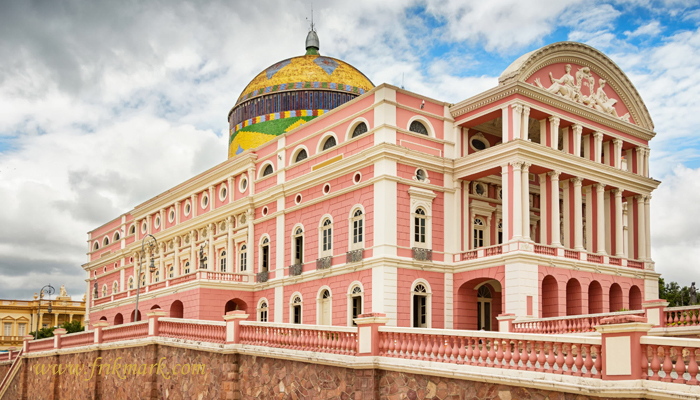
Manaus, the capital of the state of Amazonas in northern Brazil, is a city located in the heart of the Amazon rainforest and is known as the gateway to this unique ecosystem. Located at the confluence of two major rivers, the Rio Negro and the Amazon River, the city has special geographical features that make it one of the world’s leading destinations for ecotourism and biology studies.
As an important commercial center in the Amazon region, Manaus was once known for its rubber industry and experienced a significant economic boom in the early 20th century. This boom period also influenced its urban architecture, with the Church of San Sebastian and the Teatro Amazonas being examples of the city’s grandiose and historic buildings from its golden age. These buildings still retain their charm and reflect Manaus’ turbulent history.
The nature surrounding Manaus is one of its biggest attractions. The Amazon rainforest that surrounds the city is home to rare species of plants and animals. Tourists can also use the Amazon River and the Black River for boating, fishing, and wildlife viewing. Jaú National Park and the Caímbos Reserve are other natural sites in the area that help preserve the biodiversity of the Amazon.
As a cultural and historical city, Manaus is home to local festivals and events that celebrate indigenous culture and Amazonian music. Local music such as bossa nova and maracas can be heard on the streets of the city, reflecting the rich and fascinating culture of the region. Local markets such as the Odomodoro Market are also a place to buy handicrafts and local food that tourists can enjoy.
Combining industrial history, indigenous culture, and the pristine nature of the Amazon, Manaus is a unique destination for those seeking a different experience and familiarity with one of the natural wonders of the world.
Belém – coastal city at the mouth of the Amazon River
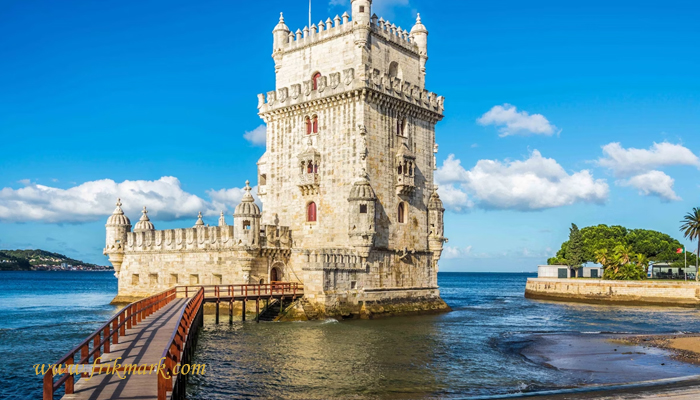
Belém, the capital of the state of Pará in northern Brazil, is one of the oldest and most attractive cities in the country, known as the gateway to the Amazon. Located near the mouth of the Amazon River, the city has become an important center for trade and cultural exchange for centuries due to its unique geographical location in the tropics and adjacent to the Atlantic Ocean. As one of the entry points to the Amazon rainforest and the Amazon River, Belém is a great attraction for tourists and ecotourism enthusiasts.
Belém is also a city with a rich history and colonial architecture. The city was founded by the Portuguese in the 17th century, and architectural monuments from that era can still be seen in the historic center of Belém, such as the Nossa Senhora do Carmo Church and the Church of Saint Joseph. The Versão Market, one of the city’s most important attractions, has become a place to buy local products and indigenous crafts, and is a symbol of Belém’s culture and history.
One of the most striking features of Belém is its pristine nature and beautiful beaches. The city is located near various islands and the Amazon River, which offer amazing views of tropical forests and pristine beaches. Nature lovers can visit Marajo Island and the Amazon National Park, where they can explore its diverse wildlife.
Belém’s culture is also known for its unique cuisine and local music. Local dishes such as sarapatel and tacacho, made with various meats and traditional spices, are among the city’s culinary delights. Maraca music, a combination of dance and music, is also heard at local celebrations and festivals in Belém.
Combining history, culture, and pristine nature, Belém is a city that can offer tourists a wonderful and diverse experience of Brazil.
Bonito – a nature walker’s paradise with crystal-clear rivers
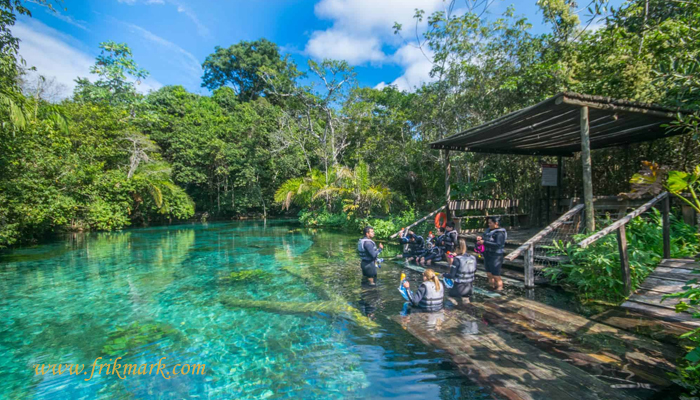
Bonito, a small town in the state of Mato Grosso do Sul in Brazil, is known for its unique nature and natural tourist attractions. The city is considered one of the best ecotourism destinations in Brazil and the world, and tourists from all over the world travel to this area to see its natural beauty. Bonito is located among tropical forests, rivers, caves and amazing waterfalls, all of which make it a popular destination for nature and adventure enthusiasts.
One of the most important features of Bonito is its crystal clear waters that flow through underground rivers and caves. Tourists can swim in the Praia and Sorrina rivers and watch colorful fish and aquatic life in the clear waters. Also, the Bonito Blue Caves, located deep underground, provide excellent opportunities for speleology and visiting natural underground beauties. These amazing landscapes are some of the special features of this area that have made it one of the most popular destinations in the world.
In addition to its natural attractions, Bonito is also known for its protected areas and national parks. Bonito National Park, one of the city’s most important attractions, offers opportunities for hiking in the rainforest, wildlife viewing, and nature trails. The park is known as a protected area for ecotourism due to its diverse flora and fauna.
In addition to its nature, Bonito is also attractive for its local culture and traditional cuisine. Dishes such as chaca (Brazilian meat dish) and picanha (grilled meats), prepared with typical Brazilian flavors, are served in local restaurants, offering a delightful experience of Brazilian food culture.
Combining pristine nature, adventure activities, and local culture, Bonito is a city that every nature and ecotourism enthusiast should put on their travel bucket list.
Find luxury properties in Brazil in all Brazilian cities with Frikmark
With an experienced team specializing in luxury real estate in Brazil, Frikmark can find the luxury property you are looking for in all cities in the country.
Whether you are looking for a beach villa in Rio de Janeiro, a luxury apartment in São Paulo, or a large house in Brasilia, Frikmark ‘s Brazil immigration group can introduce you to the best options with access to an extensive network of properties and strong connections with sellers and developers.
Also, Frikmark can help you choose and purchase property in Brazil, taking into account your taste, budget, and needs, and will be by your side throughout the entire purchase process, from property search to legal procedures and after-sales service.

